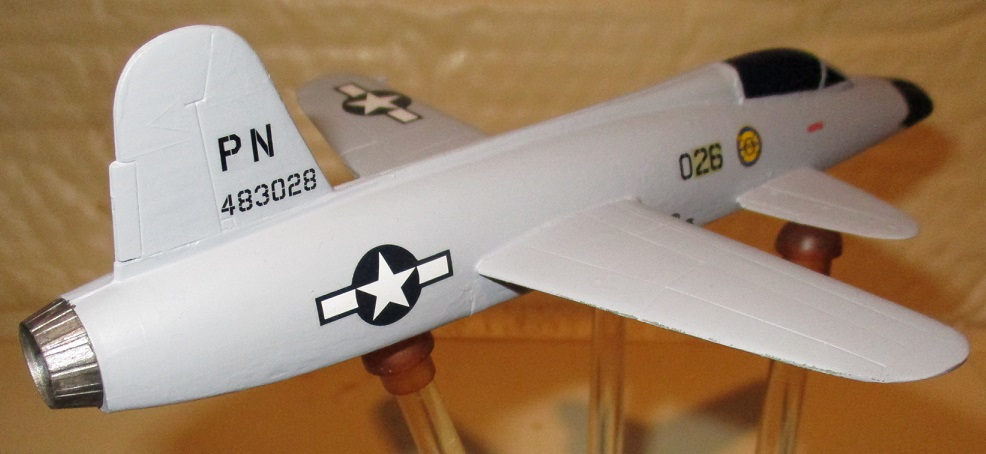
The war dragged on through the summer of 1945 which culminated in the A-bomb being a fizzle. As the allies girded themselves for the bloody invasions of Operations Olympic and Coronet, the Japanese upped their game by improving on the Fu-Go balloon fire bombing of the North American west coast.

Carried aloft at great speeds by the Jet Stream, these balloons had a minimal impact, but by the spring of 1946, larger, improved Fu-Go II balloons started being dispatched.

These weapons would not just start some nuisance fires, but would obliterate anything they targeted with high explosives.

Fortunately, by this time, the U.S. Army Air Forces thought they had the perfect defense in the form of a new jet fighter.


Known as the Lockheed YP-78 Super Star Jet, the aircraft was developed from the L-133 Star Jet project, the first American jet design.

The YP-78 was intended to be easier to mass-produce and service. Heavily armed with four 22 m.m. cannon, it was given a new, top-secret power plant, the General Electric J33XXL engine of undisclosed horsepower.

By April 1946, a service-test batch of YP-78 Super Star Jets had been produced and assigned to a secret base in Washington state.

This service-test squadron, formerly part of the 20th Pursuit Group, would not only put the prototype YP-78s through their paces, but would also defend western Washington state and northern Oregon (if they were in the mood) from the Japanese Fu-Go II balloon bomb onslaught.


The new YP-78 Super Star Jets had no problem reaching the high altitudes of the Fu-Go II balloons and were able to interdict all but one of the 35 that showed up in the first weeks of operations.

Three of these interceptions actually occurred over the Pacific ocean, and had the Navy found out, there would've been hell to pay. While one Fu-Go II balloon got through and bombed the Tualatin Bowl-A-Drome, only minor damage was reported by the near-miss but it did spoil a few rounds of duck pins.

By the end of April, the Japanese Fu-Go II balloon offensive had run out of steam due to production problems caused by shortages from the allied blockade. The Army Air Force didn't know that and took to the air one last time to counter an attack against the state capitol in Olympia.

Aircraft 026 screamed down to attack the aerial invader, who was unfortunately, not Japanese.

At that moment, the state house was celebrating the speaker's birthday and Candi Clown was about to perform the finale of her balloon act. Suffering a fate worse than the Gong Show hook some 30 years later, Candi Clown was shot down.

Luckily her fall was broken by the ubiquitous pine trees before she landed in a nearby collecting pool and emerged wet but mostly unharmed. However, the scandal of poor target identification would spell the end of the YP-78.

Even without this event, the YP-78 was doomed anyway. Metallurgy of the day wasn't up to an engine as powerful as the General Electric J33XXL and aircraft 026 probably only had another 20 hours of flight time left before it consumed its vitals. The sharp-eyed among you may notice that aircraft 026 seems mis-numbered with serial 483028. This is because two pre-production air frames were static-tested to destruction and never actually released for operational service.

While the YP-78 Super Star Jet turned out to be a dead-end, one can't deny its harpoon-like good looks even if the so-called "experts" still refuse to admit that this aircraft ever was.
Brian da Basher